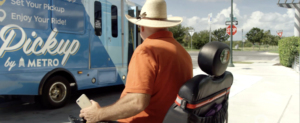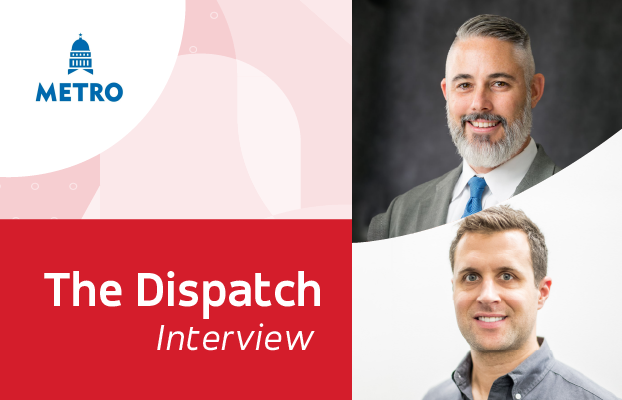Don't miss another podcast. Sign up here.
Building a public transportation network is rarely straightforward, especially in Austin, Texas. Ranked as America’s fastest growing city for nearly 10 consecutive years, roughly 100 people move to the Austin metropolitan area every day, making transit an ever-evolving puzzle.
For Chad Ballentine, the city’s explosive growth is both a challenge and an opportunity. As the Vice President of Demand Response and Innovative Mobility at Capital Metropolitan Transit Authority (CapMetro), Ballentine is responsible for determining how this huge influx of new residents moves about the city, especially as transit ridership wanes in the wake of COVID-19.
After years of experimentation, Austin’s demand-response service, Pickup, is proving to be a winning horse in the race. What started as a small paratransit-focused pilot in April 2017 is now a vast network of six operational zones across the Austin metro area, providing flexible on-demand public transportation in urban, suburban, and rural neighborhoods.
“Rolling Pickup out in six different zones was very unique because every one of those zones is very different,” Ballentine explained. “Pickup is an important transit tool. We really identified that it needs to be used in the context of fixed-route services, so identifying what it is you’re trying to solve was the most important thing we did. With each of the six zones, we were trying to solve different types of transit situations.”
Using the Pickup app (iOS and Android), passengers can hail an on-demand ride anywhere within each service zone, with service addressing three use cases depending on the region:
- First-and-last mile connections to popular rail stations and bus stops.
- Eliminating transit deserts by offering Pickup where traditional forms of public transportation aren't available.
- Replacing fixed-route bus routes that weren't performing.
CapMetro says Pickup has become a staple in zones with the least density. In June 2019, CapMetro re-launched Pickup in Manor, a fast-growing rural community some 15 miles east of Austin. With limited access to other forms of public transportation — or anything beyond a private vehicle, for that matter — reaction to the service has exceeded expectations.

“Our rural zones are very interesting because a lot of the time, those areas don’t have access to Uber, Lyft, taxis, or anything. So in urban environments, you might have those things you can use as a backup, but in some of our rural or suburban areas, those options just aren’t there,” Ballentine said. “I think that’s partially why Pickup has become so popular. It’s also more affordable to live out there, so for folks who are on limited incomes, they actually rely heavily on our service, which is why I think it’s been so successful.”
After launching a thriving service zone in Manor, CapMetro scaled-up operations in August 2019, launching four new zones throughout the region; the sixth zone, Leander, launched in December 2019. Pickup has seen tremendous success since launching in Manor. In the first three months of service, ridership grew by 375% and utilization — the number of passengers per vehicle per hour — increased by four times. Approximately 200 people download the app every week, and ridership continues to grow.
The level of flexibility that comes with dynamically routed transit networks has CapMetro excited about the future of Pickup, especially as it relates to how it can quickly respond to future health crises like COVID-19.

“With Pickup, I find that it’s more scalable than a fixed route bus, which has been very helpful for us. With a fixed route bus, either I put it out there, or I don’t, or I can stretch out the headways and really provide terrible service. When it comes to Pickup, as I get more riders, I’m able to add more service incrementally,” Ballentine explained. “And talking about the scalability of Pickup, that’s something we could potentially use if we see this kind of thing happening again, or if we have a second wave or another pandemic. I think we’d be poised to roll out more service in the future because it’s easier to surgically roll out service where we need it and remove it where we don’t.”
Pickup ridership has already bounced back to 50% of what it was pre-COVID, a rate of return much higher than the city’s traditional fixed-route transit. Ballentine says he thinks passengers feel more at ease using a service where they can book a seat in a vehicle that is capped at a certain capacity. The future of public transportation looks bright in Austin. If the health crisis taught the CapMetro team one thing, Ballentine says it’s the ability to see your vulnerabilities and organizational blind spots, and how to fix them.




